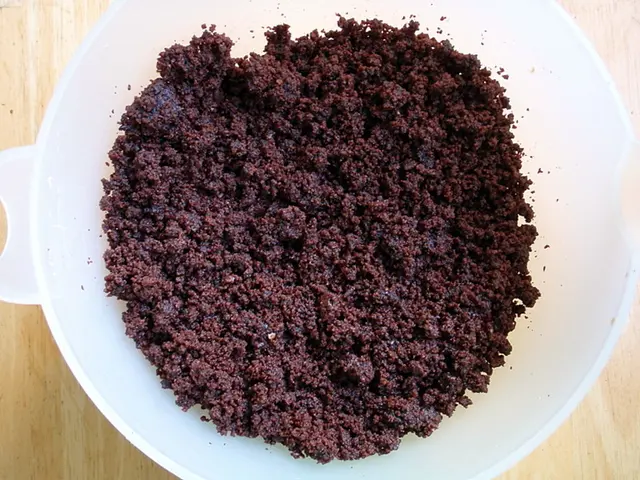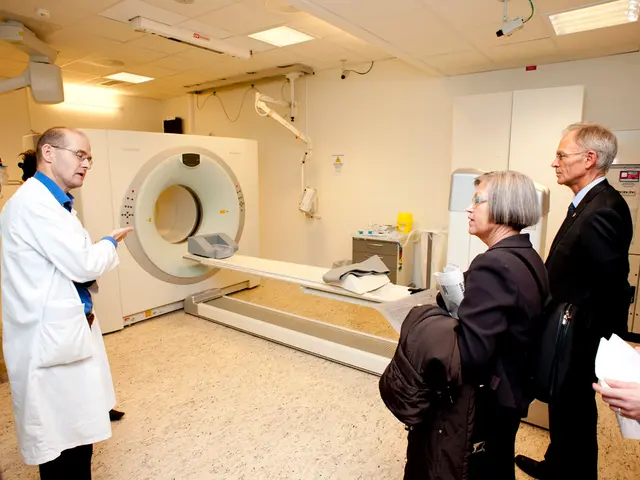Differentiating Age Spots from Skin Cancer: A Guide to Recognition
Harmless Age Spots: A Guide to Recognizing Them and Skin Cancer
Age spots, also known as solar lentigines or liver spots, are common pigmented lesions that develop as a result of sun exposure. Although they may resemble certain types of skin cancer, age spots are benign and pose no threat to one's health.
These spots typically appear on sun-exposed areas such as the hands, face, shoulders, and feet. To help distinguish age spots from skin cancer, it is crucial to understand the differences in their texture, color, and placement.
Age Spots vs. Skin Cancer
Though age spots and skin cancer may share some similarities, there are some key differences that can aid in identification. Understanding these differences is essential to seeking timely medical advice when necessary.
Age Spots
Age spots are flat, darkened patches on the skin that generally do not itch, feel crusty, or look rough. They are typically brown, yellow, or gray and have clear borders. Age spots develop due to increased melanin production, which is the skin's natural pigment, in response to sun exposure.
Unlike skin cancer, age spots do not require treatment, as they are harmless. However, some individuals may choose to remove them for cosmetic reasons.
Skin Cancer
Skin cancer is a type of cancer that can develop on areas exposed to sunlight. Similar to age spots, skin cancer most commonly affects sun-exposed areas. The three primary types of skin cancer are basal cell carcinoma, squamous cell carcinoma, and melanoma.
Unlike age spots, skin cancer is harmful and potentially life-threatening, as it has the potential to spread to other parts of the body. Symptoms of skin cancer often include changes in the appearance, texture, or color of moles or growths on the skin, such as asymmetry, irregular borders, and multiple colors.
Actinic Keratosis
Another mark that may be mistaken for an age spot is actinic keratosis, a precancerous growth caused by prolonged sun exposure. Actinic keratosis can appear as rough, scaly patches, which may be red, pink, tan, or brown. Although actinic keratosis is not skin cancer itself, if left untreated, it may develop into squamous cell carcinoma.
Can Age Spots Transform into Cancer?
Contrary to some misconceptions, age spots cannot transform into cancer. However, actinic keratosis, which may look like age spots, is a precancerous condition that, if undetected and left untreated, could potentially develop into skin cancer.
Symptom Comparison
Although there are similarities between the symptoms of age spots and skin cancer, there are also differences that can help in distinguishing between the two.
Age Spot Symptoms
Age spots typically:
- are flat and smooth
- have defined borders and vary in size, from a few millimeters to centimeters
- are yellow, brown, or gray
- appear on sun-exposed areas
- may fade during the winter and become more pronounced during the summer
Skin Cancer Symptoms
Skin cancer symptoms can vary, depending on the type, but may include changes in color, shape, or size of moles or growths, as well as symptoms such as itching, oozing, or bleeding. Actinic keratosis may present as rough, scaly patches on the skin or crusty, scaly bumps similar to acne.
When to Contact a Doctor
If a person notices any changes to their skin, they should speak with a healthcare professional to have their skin examined. Recognizing and treating skin cancer early can improve health outcomes and make treatment more manageable.
It is essential to monitor any new or changing marks on the skin and to contact a doctor if there are potential signs of skin cancer, such as changes in size, color, or shape, or if a mark seems different from others on the skin.
Diagnosis and Treatment
Age spots can usually be diagnosed with a physical examination by a doctor or dermatologist, who will assess the spot's appearance, texture, and placement. If necessary, a skin biopsy may be performed.
Treatment for age spots is typically optional, as they pose no health risks. Various treatment options are available, such as topical creams, chemical peels, microdermabrasion, laser treatments, and cryosurgery.
Skin cancer treatment varies depending on the type and stage of the cancer and the person's individual circumstances. Common treatment options include surgical removal, topical therapies, radiation therapy, chemotherapy, and immunotherapy.
In conclusion, recognizing the differences between age spots, skin cancer, and actinic keratosis can help individuals distinguish between benign and potentially harmful conditions. Seeking medical advice and monitoring the skin for any unusual changes is crucial in early detection and management.
- Age spots, unlike skin cancer, are harmless and do not require treatment, often appearing as flat, darkened patches with defined borders and varying in size from a few millimeters to centimeters.
- Skin cancer, on the other hand, is a type of cancer that can develop on areas exposed to sunlight, with symptoms including changes in the appearance, texture, or color of moles or growths, such as asymmetry, irregular borders, and multiple colors.
- Actinic keratosis, a precancerous growth caused by prolonged sun exposure, can appear as rough, scaly patches or crusty, scaly bumps similar to acne, and if left untreated, it may develop into squamous cell carcinoma.
- Dermatologists and healthcare professionals are crucial in the early detection and management of skin cancer, making it essential to seek their advice when any changes to the skin are noticed.
- Treatment for age spots is typically optional and cosmetic, while skin cancer treatment varies depending on the type and stage, with options including surgical removal, topical therapies, radiation therapy, chemotherapy, and immunotherapy.








